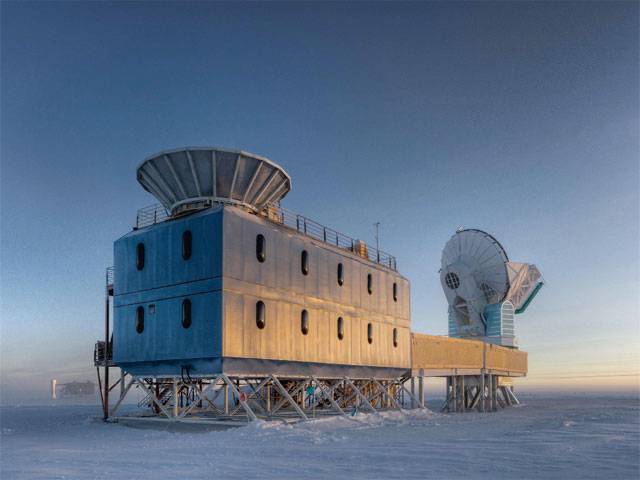WASHINGTON : Waves of gravity that rippled through space right after the Big Bang have been detected for the first time, in a landmark discovery for understanding how the universe was born, US scientists said Monday. The waves are evidence of a rapid growth spurt 14 billion years ago, and provide a long-awaited answer to the last untested element of Albert Einstein's nearly century-old theory of general relativity.
The "first direct evidence of cosmic inflation" was announced by experts at the Harvard-Smithsonian Center for Astrophysics.
The discovery was made with the help of a telescope, stationed at the South Pole, that measures the oldest light in the universe.
If confirmed by other experts, some said the work could be a contender for the Nobel Prize.
The waves that move through space and time have been described as the "first tremors of the Big Bang."
Their detection confirms an integral connection between Einstein's theory of general relativity and the stranger conceptual realm of quantum mechanics.
"Detecting this signal is one of the most important goals in cosmology today. A lot of work by a lot of people has led up to this point," said John Kovac, leader of the BICEP2 collaboration at the Harvard-Smithsonian Center for Astrophysics.
The telescope's location at the South Pole "is the closest you can get to space and still be on the ground," said Kovac.
"It's one of the driest and clearest locations on Earth, perfect for observing the faint microwaves from the Big Bang."
The telescope targeted a specific area of sky known as the "Southern Hole" outside the galaxy where there is little dust or extra galactic material to interfere with what humans could see with the potent sky-peering tool.
By observing the cosmic microwave background, or a faint glow left over from the Big Bang, small fluctuations gave scientists new clues about the conditions in the early universe.
The gravitational waves rippled through the universe 380,000 years after the Big Bang, and these images were captured by the telescope.
"It's mind-boggling to go looking for something like this and actually find it," Clem Pryke, associate professor at the University of Minnesota, told reporters at an event in Boston to announce the findings.
Rumors of a major discovery began to circulate Friday, when the press conference was first announced.
However, scientists said they spent three years analyzing their data to rule out any errors.
"This has been like looking for a needle in a haystack, but instead we found a crowbar," said Pryke.
Harvard theorist Avi Loeb said the findings provide "new insights into some of our most basic questions: Why do we exist? How did the universe begin?
"These results are not only a smoking gun for inflation, they also tell us when inflation took place and how powerful the process was," Loeb said.
According to theoretical physicist Alan Guth, who proposed the idea of inflation in 1980, described the latest study as "definitely worthy of a Nobel Prize."
"This is a totally new, independent piece of cosmological evidence that the inflationary picture fits together," Guth, of the Massachusetts Institute of Technology, was quoted as telling the journal Nature.
Thursday, April 18, 2024
Major discovery bolsters Big Bang theory of universe

Caption: Major discovery bolsters Big Bang theory of universe
PPP, PML-N parliamentary delegation in Beijing to boost ties
April 18, 2024
Eight more Sindh ministers sworn in
April 18, 2024
AGP’s audit report discloses irregularities in BRT project
April 18, 2024
National Assembly session tomorrow
April 18, 2024
EC announces election schedule for PP-269
April 18, 2024
Hepatitis Challenge
April 18, 2024
IMF Predictions
April 18, 2024
Wheat War
April 18, 2024
Rail Revival
April 17, 2024
Addressing Climate Change
April 17, 2024
Justice denied
April 18, 2024
AI dilemmas unveiled
April 18, 2024
Tax tangle
April 18, 2024
Workforce inequality
April 17, 2024
New partnerships
April 17, 2024
ePaper - Nawaiwaqt
Advertisement
Nawaiwaqt Group | Copyright © 2024





